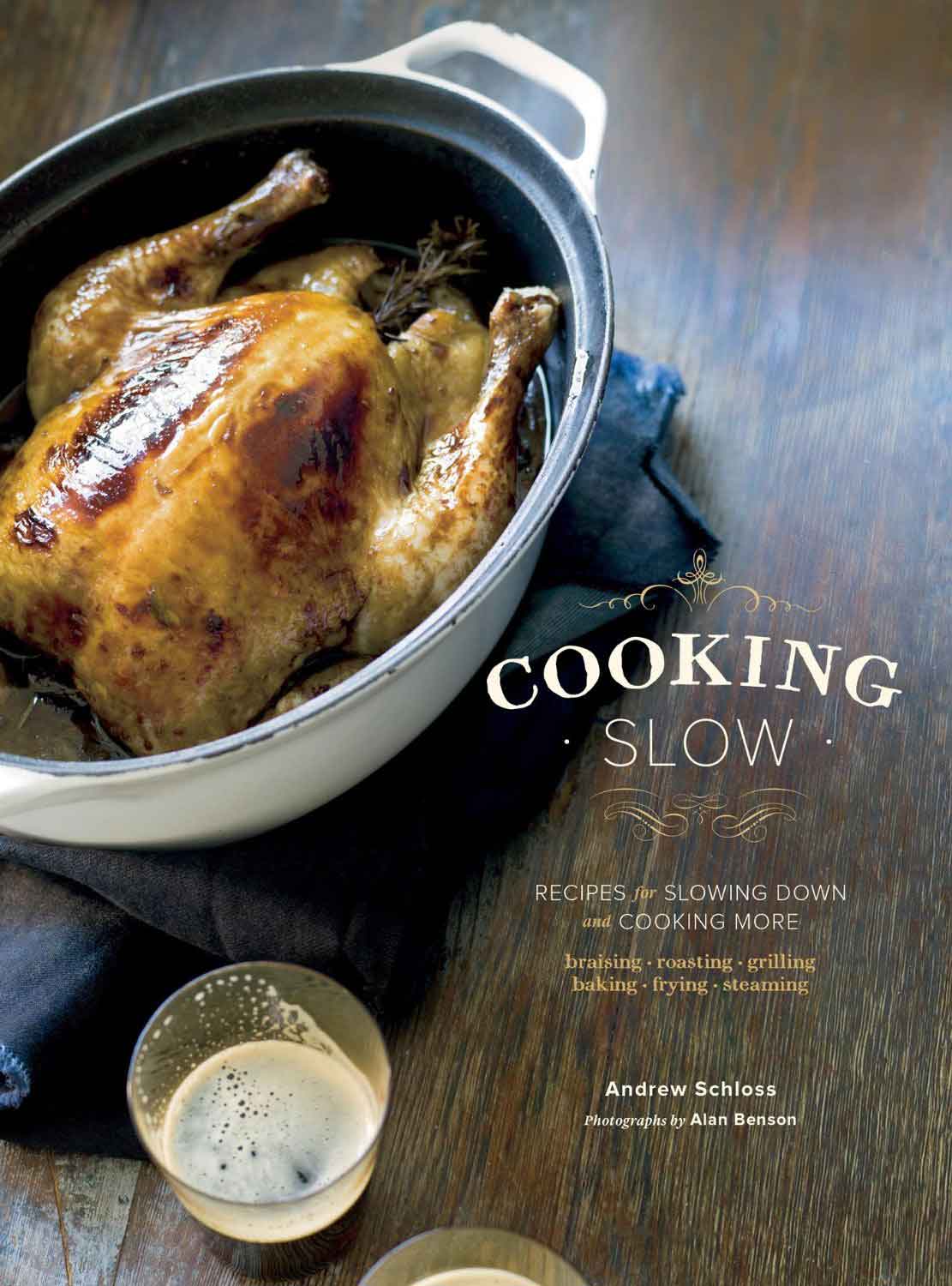
Cooking Slow
Andrew Schloss
Chronicle Books
September 2013
$35.00/Hardcover
ISBN-13: 978-1452104690
Andrew Schloss
Chronicle Books
September 2013
$35.00/Hardcover
ISBN-13: 978-1452104690
 Andrew Schloss is a cooking teacher, food writer, food industry consultant, and cookbook author. He authored The Art of the Slow Cooker and co-authored Fire It Up and Mastering the Grill for Chronicle Books. He is the former president of The International Association of Culinary Professionals and former director of the culinary curriculum for The Restaurant School in Philadelphia. He lives with his family in eastern Pennsylvania.
Andrew Schloss is a cooking teacher, food writer, food industry consultant, and cookbook author. He authored The Art of the Slow Cooker and co-authored Fire It Up and Mastering the Grill for Chronicle Books. He is the former president of The International Association of Culinary Professionals and former director of the culinary curriculum for The Restaurant School in Philadelphia. He lives with his family in eastern Pennsylvania.
Alan Benson is a food and lifestyle photographer based in Australia, whose cookbook work includes Rustica and Indochine.
Delicious home cooking is the cornerstone of gracious living. The six simple slow-cooking techniques in COOKING SLOW manifest big flavor with little hands-on time in the kitchen.
In these pages, discover slow simmering (popularly known as braising), slow roasting, slow baking, slow grilling, slow frying, and slow steaming–and use your slow cooker and sous vide machine to their best advantage with more than a dozen new leave-it-and-love-it recipes.
Imagine Sunday afternoons filled with the scent of slow-simmering Brisket with Prunes and Oranges and the bright Overnight Lemon Cheesecake that slow-baked while you slept. Imagine mingling with your guests by the pool while a Coffee BBQ Brisket smokes, browns, and goes meltingly tender over the gently glowing coals on your grill.
This is maximum flavor with minimum effort: cooking at low temperatures over a length of time means you don’t have to devote personal time in the kitchen to make a gorgeous and satisfying meal. These 94 recipes are geared to cooks of every skill level.